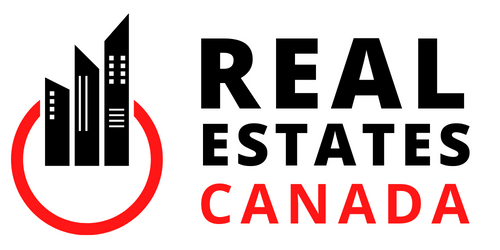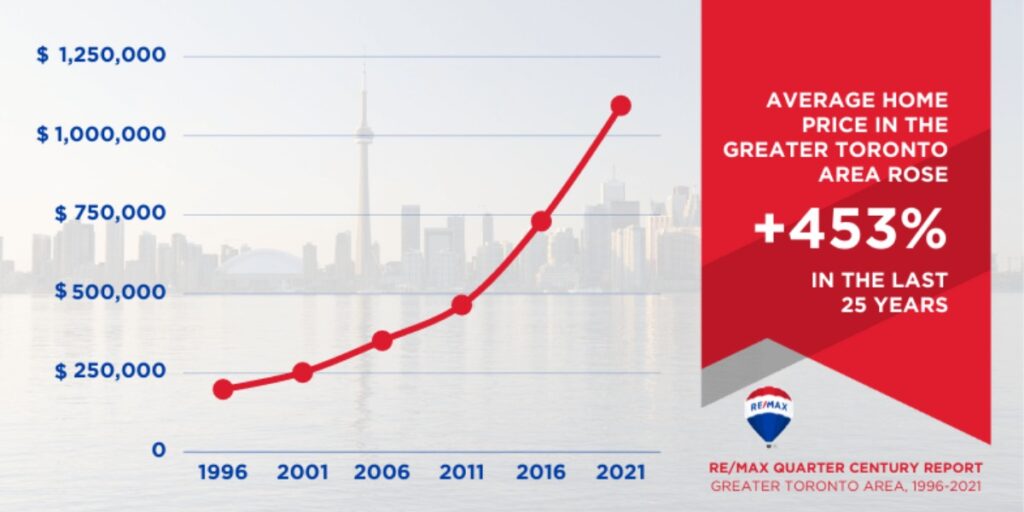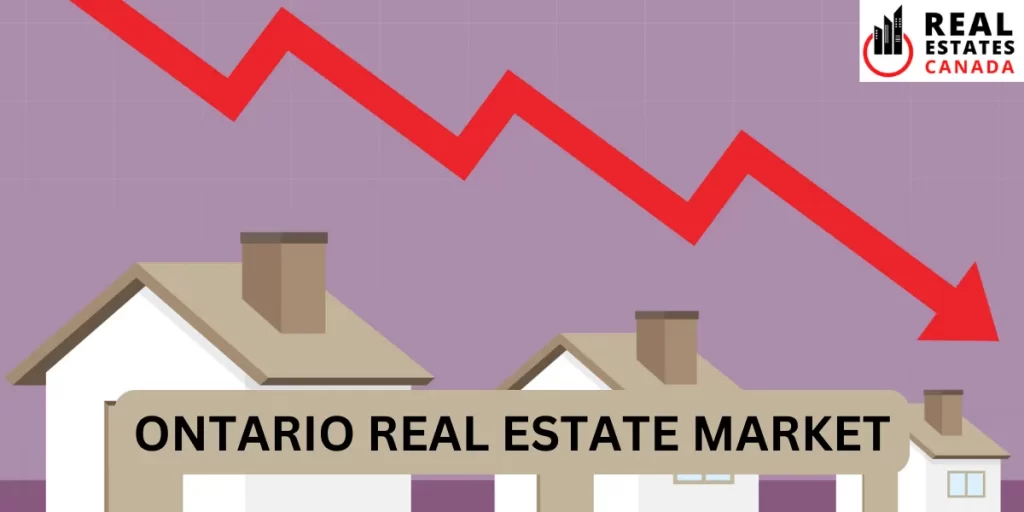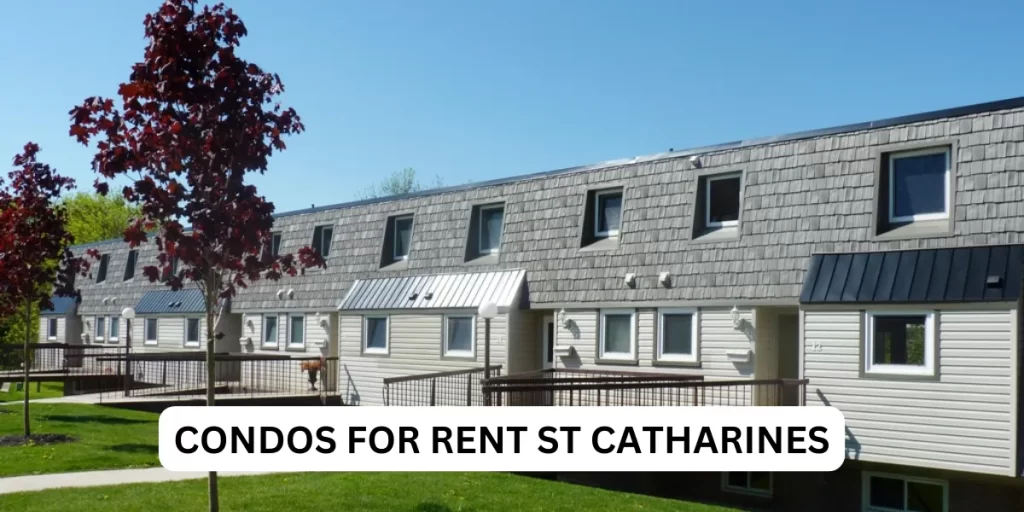Canadian Survey: Concerns Mount Over Rising Home Prices

Overview of the Survey Findings
The heading “Overview of the Survey Findings” would serve as the introductory section of an article or report on the topic of “Canadian Survey: Concerns Mount Over Rising Home Prices.Canadian Survey: Concerns Mount Over Rising Home Prices. ” Here’s how it would be explained:
This section provides a comprehensive summary of the key findings from a recent survey conducted in Canada regarding the escalating concerns surrounding rising home prices. It aims to present a condensed version of the survey results, highlighting the most significant trends, statistics, and insights gathered from the data. The overview typically includes information on the scope and methodology of the survey, such as the sample size, demographics surveyed, and the timeframe of data collection.
Key points covered in the overview may include:
Perceived Impact: How respondents perceive the impact of rising home prices on their financial well-being and quality of life.
Geographical Variations: Variations in housing affordability concerns across different provinces or cities within Canada.
Government Response: Public opinion on the effectiveness of government policies aimed at addressing housing affordability issues.
Future Expectations: Expectations and concerns about the future trajectory of home prices and affordability.
The purpose of this section is to provide readers with a clear and concise understanding of the survey’s findings, setting the stage for more detailed discussions and analyses in subsequent sections of the article or report. It acts as a foundation upon which the broader implications and recommendations can be built.
Factors Driving the Surge in Canadian Home Prices

The heading “Factors Driving the Surge in Canadian Home Prices” would delve into the various reasons behind the notable increase in housing prices across Canada. Here’s a detailed explanation of what this section would cover:
Economic Factors: This section would explore how economic conditions such as low interest rates, economic growth, employment levels, and inflation rates contribute to the rise in home prices. For instance, low interest rates make mortgages more affordable, thereby increasing demand for housing.
Supply and Demand Dynamics: It would analyze the imbalance between the supply of housing (new construction and availability of existing homes) and the demand from homebuyers. Factors like population growth, immigration levels, and changes in household formation rates would be discussed.
Speculation and Investment: This part would cover how speculative activity and investment in real estate (both domestic and foreign) influence housing prices. It might discuss the impact of foreign buyers, real estate investment trusts (REITs), and individual investors on market dynamics.
Government Policies: This section would assess the role of government policies and regulations in shaping housing prices. It might include discussions on zoning laws, land use regulations, taxation policies (e.g., property taxes, capital gains taxes), and housing subsidies or incentives.
Market Psychology: Exploring how consumer confidence, expectations of future price increases, and herd behavior among buyers and investors contribute to price volatility and increases.
Urbanization and Location Factors: Examining how urbanization trends and preferences for certain locations (e.g., proximity to jobs, amenities, transportation) drive up prices in specific urban centers or regions.
Housing Market Mechanisms: Discussing factors like the role of real estate agents, developers, and mortgage lenders in influencing pricing strategies and market liquidity.
This section would provide readers with a comprehensive understanding of the multifaceted factors driving the surge in Canadian home prices. By dissecting these factors, it aims to elucidate the complexities of the housing market and the interplay between various economic, regulatory, and societal influences.
Regional Disparities in Housing Affordability
The heading “Regional Disparities in Housing Affordability” would focus on the unequal affordability of housing across different regions within Canada. Here’s a detailed explanation of what this section would cover:
Regional Price Variations: It would highlight how housing prices vary significantly between provinces, cities, and even neighborhoods within Canada. For example, housing in major metropolitan areas like Vancouver and Toronto tends to be much more expensive compared to smaller cities or rural areas.
Income Disparities: This section would explore how regional differences in income levels affect housing affordability. Higher-income regions typically have more expensive housing markets, making it harder for lower-income households to afford homes.
Market Demand and Supply: Analyzing how regional variations in population growth, migration patterns, and housing supply impact affordability. Regions experiencing rapid population growth or limited housing supply often face higher prices.
Local Economic Factors: Discussing how local economic conditions, such as job opportunities, industry presence, and economic stability, influence housing affordability within different regions.
Housing Market Policies: Examining how regional or municipal policies and regulations, such as zoning laws, land use policies, and development restrictions, affect housing prices and affordability.
Urban vs. Rural Disparities: Contrasting affordability challenges between urban centers and rural areas, where factors like availability of amenities, transportation infrastructure, and housing stock differ significantly.
Housing Affordability Indices: Using data from housing affordability indices or metrics to illustrate regional disparities and rank different regions based on their affordability levels relative to local incomes.
Impact on Residents: Exploring the socio-economic implications of regional housing affordability disparities on residents, including issues related to homelessness, commuting burdens, and overall quality of life.
This section would provide readers with insights into how housing affordability varies geographically across Canada, highlighting the complex interplay of economic, demographic, and policy factors that contribute to these regional disparities. By examining these variations, it aims to shed light on the challenges faced by different communities and the need for targeted policies to address regional housing affordability issues.
Impact of Rising Home Prices on Canadian Families

The heading “Impact of Rising Home Prices on Canadian Families” would delve into the various ways in which the increasing cost of housing in Canada affects households across the country. Here’s a detailed explanation of what this section would cover:
Affordability Challenges: Discussing how rising home prices make it increasingly difficult for Canadian families, especially those with moderate to low incomes, to afford suitable housing. This includes challenges in saving for a down payment, qualifying for a mortgage, and managing housing-related expenses.
Financial Strain: Exploring the direct financial burden on families due to higher mortgage payments, property taxes, and utility costs associated with owning a home. It might also include discussions on the impact of rising rents for families in the rental market.
Generational Impact: Analyzing how different generations (such as millennials, Generation X, and baby boomers) are affected differently by rising home prices. For example, younger generations may face greater difficulty entering the housing market, while older generations may see increased wealth but also higher property taxes and maintenance costs.
Inter-generational Wealth Transfer: Discussing the implications of rising home prices on wealth accumulation and inter-generational wealth transfer within families, particularly in regions where housing equity plays a significant role in financial planning and inheritance.
Quality of Life: Exploring how housing affordability impacts the overall quality of life for Canadian families, including stress levels, mental health, and family dynamics. For instance, long commutes due to unaffordable housing near job centers can impact work-life balance and family time.
Social Mobility: Examining how housing affordability affects social mobility, particularly for families striving to move up the economic ladder or relocate for better opportunities. Limited housing options in affordable areas can constrain mobility and access to quality education and healthcare.
Policy Implications: Discussing the need for policy interventions, such as affordable housing programs, rent control measures, and incentives for homebuyers, to mitigate the negative impacts of rising home prices on Canadian families.
Community Stability: Exploring the broader societal implications of housing affordability on community stability, neighborhood dynamics, and local economies, particularly in regions experiencing rapid gentrification or housing market speculation.
This section would provide readers with a comprehensive understanding of how the affordability crisis in the Canadian housing market directly affects families across different demographics and socio-economic backgrounds. By examining these impacts, it aims to highlight the urgent need for policy reforms and innovative solutions to ensure housing remains accessible and affordable for Canadian families.
Government Policies and Their Effectiveness
The heading “Government Policies and Their Effectiveness” would focus on analyzing the various measures implemented by the Canadian government to address issues related to rising home prices and housing affordability. Here’s a detailed explanation of what this section would cover:
Policy Objectives: It would begin by outlining the primary goals and objectives of government policies related to housing. These might include promoting affordable homeownership, increasing rental housing supply, reducing homelessness, and fostering sustainable housing markets.
Types of Policies: Discussing the different types of policies enacted by federal, provincial, and municipal governments. This could include fiscal policies (such as tax incentives for first-time homebuyers or property tax reforms), regulatory policies (such as zoning regulations or building codes), and social policies (such as subsidies for affordable housing developments or rent control measures).
Policy Implementation: Analyzing how effectively these policies have been implemented across various regions in Canada. This includes assessing the consistency of policy application, enforcement mechanisms, and the role of governmental agencies or departments involved in housing management.
Impact Assessment: Evaluating the impact of these policies on housing affordability, market stability, and socio-economic outcomes. This involves examining changes in housing prices, rental vacancy rates, homelessness statistics, and the accessibility of housing for different demographic groups.
Public and Expert Opinion: Incorporating perspectives from housing experts, economists, policymakers, and stakeholders in the housing sector on the effectiveness of government policies. This includes identifying strengths, weaknesses, unintended consequences, and areas for improvement in current housing policy frameworks.
Comparative Analysis: Conducting a comparative analysis with housing policies implemented in other countries or regions facing similar housing affordability challenges. This helps to benchmark Canada’s approach and learn from successful strategies elsewhere.
Challenges and Limitations: Discussing the challenges and limitations faced by government policies in achieving their intended objectives. This might include political obstacles, budget constraints, resistance from industry stakeholders, and legal barriers.
Future Directions: Offering recommendations for future policy directions based on lessons learned and emerging trends in the housing market. This could include advocating for innovative policy solutions, enhancing collaboration between levels of government, and addressing emerging issues like climate resilience in housing infrastructure.
Overall, this section would provide readers with a comprehensive analysis of how government policies impact housing affordability in Canada, emphasizing both the achievements and the ongoing challenges in addressing this critical issue. By evaluating policy effectiveness, it aims to contribute to informed discussions and debates on shaping future housing policy reforms.
Public Perception and Sentiment on Housing Issues

The heading “Public Perception and Sentiment on Housing Issues” would explore how the general public perceives and feels about various housing-related issues in Canada. Here’s a detailed explanation of what this section would cover:
Public Concerns: Discussing the primary concerns and anxieties that Canadian residents have regarding housing. This might include worries about affordability, availability of housing options, quality of housing, and the impact of housing costs on overall financial stability.
Perceived Causes: Exploring how the public perceives the root causes of housing affordability challenges. This could include opinions on factors such as speculative investment, foreign buyers, government policies, lack of housing supply, and income inequality.
Impact on Communities: Examining how housing issues are perceived to affect local communities and neighborhoods. This might include discussions on gentrification, displacement of long-term residents, changes in neighborhood character, and social cohesion.
Personal Experiences: Sharing personal stories and anecdotes from individuals or families regarding their experiences with housing affordability. This provides a human perspective on how housing issues directly impact everyday lives.
Trust in Institutions: Analyzing the level of trust and confidence that the public has in government agencies, policymakers, and real estate industry stakeholders to effectively address housing challenges. This could include perceptions of transparency, accountability, and responsiveness to public concerns.
Public Opinion on Policy Solutions: Gathering insights into the types of solutions and interventions that the public believes would be effective in improving housing affordability. This might include support for measures such as rent control, affordable housing subsidies, regulatory reforms, and incentives for homebuyers.
Regional Variations: Considering how public perception and sentiment on housing issues vary across different regions of Canada. This includes differences in concerns, priorities, and proposed solutions based on local economic conditions, housing market dynamics, and cultural factors.
Media and Influencers: Discussing the role of media coverage, social media discussions, and influential voices (such as housing advocates, academics, and community leaders) in shaping public opinion and awareness of housing issues.
Long-term Concerns: Exploring the public’s outlook on future trends in the housing market and their expectations regarding housing affordability over the coming years. This includes concerns about generational equity, sustainability, and the resilience of housing markets to economic shocks.
This section aims to provide a comprehensive understanding of how public perception and sentiment influence discussions and policy decisions related to housing in Canada. By capturing diverse perspectives and voices, it contributes to a broader dialogue on addressing housing challenges effectively and inclusively.
Expert Analysis: Causes and Long-term Implications
The heading “Expert Analysis: Causes and Long-term Implications” would involve a detailed examination of the underlying causes contributing to housing issues in Canada, as well as the potential long-term consequences for various stakeholders. Here’s a comprehensive explanation of what this section would cover:
Identification of Causes: Expert analysis would first delve into identifying and explaining the primary factors driving housing challenges in Canada. This could include factors such as:
Demand-side Factors: Such as population growth, immigration, household formation trends, and changes in buyer behavior.
Supply-side Factors: Including land availability, construction costs, regulatory constraints, and development policies.
Economic Influences: Such as interest rates, employment levels, income distribution, and economic cycles affecting affordability.
Market Dynamics: Such as speculation, investment patterns, real estate market trends, and global economic influences.
Historical Context: Providing insights into how historical policies, urban planning decisions, and economic shifts have shaped the current housing landscape in Canada.
Comparative Analysis: Conducting comparisons with housing markets in other countries facing similar challenges to draw lessons and insights applicable to Canada.
Forecasting Future Trends: Offering expert predictions on how housing issues might evolve in the long term, considering factors like demographic changes, economic projections, and policy interventions.
Implications for Different Stakeholders: Analyzing how housing affordability impacts various stakeholders, including:
Homeowners: Concerns about property values, equity, and financial stability.
Renters: Challenges in affordability, rental stability, and housing security.
Government: Implications for fiscal policies, social programs, and regulatory frameworks.
Businesses: Effects on workforce mobility, employee retention, and economic competitiveness.
Society: Social cohesion, inequality, and access to housing as a basic human right.
Policy Recommendations: Based on expert analysis, proposing policy recommendations and interventions aimed at addressing root causes, improving housing affordability, and promoting sustainable housing markets.
Public Awareness and Advocacy: Discussing the role of expert analysis in raising public awareness, influencing policy debates, and advocating for evidence-based solutions.
This section would provide readers with in-depth insights from experts in the field, offering a nuanced understanding of the complex factors driving housing issues in Canada and their long-term implications. By integrating expert perspectives and data-driven analysis, it aims to inform stakeholders, policymakers, and the public about effective strategies for addressing housing challenges and promoting housing affordability in Canada.
Comparative Study with Global Housing Markets

The heading “Comparative Study with Global Housing Markets” would involve a detailed examination and comparison of housing markets in Canada with those in other countries around the world. Here’s a comprehensive explanation of what this section would cover:
Scope of Comparison: This section would outline the scope and methodology of comparing Canada’s housing market with selected global markets. It would specify the countries or regions chosen for comparison based on similarities or contrasts in economic structure, housing policies, market dynamics, and cultural factors.
Housing Affordability: Analyzing how housing affordability in Canada compares to other global markets. This includes examining metrics such as price-to-income ratios, rental affordability, and the proportion of household income spent on housing costs.
Market Trends and Dynamics: Discussing similarities and differences in market trends, such as housing price appreciation, demand-supply dynamics, speculative activity, and investment trends.
Government Policies: Comparing housing policies and regulatory frameworks implemented in Canada with those in other countries. This includes assessing the effectiveness of policies aimed at promoting affordable housing, regulating property markets, and addressing homelessness.
Social and Economic Impacts: Exploring the social and economic implications of housing affordability challenges in Canada compared to other global markets. This could include examining issues such as income inequality, social mobility, housing stability, and the impact on overall economic growth.
Case Studies: Highlighting specific case studies or examples from selected global markets to illustrate successful strategies or cautionary tales in addressing housing affordability and market stability.
Lessons Learned: Drawing lessons and insights from successful housing policies and practices in other countries that could be applicable to Canada. This includes identifying innovative solutions, policy interventions, and best practices in housing management.
Future Directions: Discussing potential implications for Canada’s housing policies and market strategies based on comparative analysis and global trends. This could include recommendations for policy reforms, international collaborations, and adaptation of successful approaches to local contexts.
This section aims to provide readers with a broader perspective on housing issues by examining Canada’s challenges within the global context. By comparing with global housing markets, it seeks to enrich understanding, stimulate critical thinking, and inform discussions on effective strategies for improving housing affordability and market stability in Canada.
Community Responses and Grassroots Initiatives
The heading “Community Responses and Grassroots Initiatives” would focus on how local communities in Canada are responding to housing challenges through proactive initiatives and collaborative efforts. Here’s a comprehensive explanation of what this section would cover:
Local Advocacy Groups: Discussing the role of community-based organizations, advocacy groups, and grassroots movements in raising awareness about housing issues and advocating for policy changes. This includes initiatives focused on promoting affordable housing, tenant rights, and homelessness prevention.
Community Engagement: Exploring how residents, neighborhood associations, and community leaders are actively participating in discussions and decision-making processes related to housing policies and developments. This might include community meetings, town halls, and public forums.
Housing Co-operatives: Highlighting the role of housing co-operatives and community land trusts in providing alternative housing models that prioritize affordability, sustainability, and community ownership.
Tenant Rights and Support: Discussing initiatives aimed at supporting renters, such as tenant unions, legal aid services, and tenant organizing efforts to address issues like rent increases, eviction prevention, and improving rental conditions.
Homelessness Prevention: Examining community-led efforts to address homelessness through initiatives such as outreach programs, emergency shelters, transitional housing, and supportive housing developments.
Local Government and Collaboration: Analyzing partnerships between local governments, community organizations, and businesses to develop innovative solutions to housing challenges. This includes examples of collaborative projects, funding partnerships, and community development initiatives.
Innovative Housing Solutions: Showcasing examples of innovative housing projects and solutions developed at the community level, such as tiny home villages, modular housing developments, and adaptive reuse of vacant buildings.
Impact and Outcomes: Assessing the impact of community responses and grassroots initiatives on improving housing affordability, promoting social inclusion, and enhancing the overall quality of life in local neighborhoods.
Challenges and Success Stories: Discussing challenges faced by community initiatives, such as funding constraints, regulatory barriers, and resistance from stakeholders. Highlighting success stories and lessons learned from effective community-driven approaches to housing issues.
This section aims to highlight the crucial role of community engagement and grassroots efforts in addressing housing challenges at the local level. By showcasing community responses and initiatives, it aims to inspire collaboration, foster innovation, and promote inclusive solutions to improve housing affordability and stability in Canadian communities.
Future Trends: Predictions and Recommendations

The heading “Future Trends: Predictions and Recommendations” would focus on projecting the trajectory of housing market trends in Canada and providing strategic recommendations for addressing emerging challenges. Here’s a comprehensive explanation of what this section would cover:
Economic and Demographic Projections: Discussing anticipated economic trends, such as interest rate changes, economic growth forecasts, and demographic shifts (e.g., aging population, immigration trends) that could impact the housing market in the future.
Housing Supply and Demand Dynamics: Analyzing future projections of housing supply and demand imbalance, including factors influencing housing construction rates, land availability, and market absorption rates.
Technological Advancements: Exploring the role of technology and innovation in shaping future housing developments, such as smart home technologies, sustainable building practices, and digital platforms for real estate transactions.
Environmental Sustainability: Discussing the growing importance of environmental sustainability in housing design and construction, including trends towards energy-efficient buildings, green infrastructure, and resilience to climate change impacts.
Affordability Challenges: Projecting future challenges in housing affordability and exploring potential solutions, such as policy reforms, financial incentives, and public-private partnerships aimed at promoting affordable housing options.
Social and Cultural Shifts: Examining how societal changes, cultural preferences, and lifestyle trends (e.g., remote work, urbanization patterns) may influence housing demand and development in the future.
Policy Recommendations: Offering strategic recommendations for policymakers, government agencies, and stakeholders in the housing sector to address future challenges effectively. This could include suggestions for regulatory reforms, investment priorities, and community planning strategies.
Public Awareness and Education: Highlighting the importance of public awareness and education campaigns to inform consumers, homeowners, and renters about emerging housing trends, rights, and responsibilities.
Global Comparisons: Drawing insights from global housing market trends and best practices to inform recommendations for Canada, including lessons learned from successful approaches in other countries facing similar challenges.
Long-term Vision: Articulating a long-term vision for sustainable housing development in Canada, emphasizing principles of affordability, inclusivity, resilience, and environmental stewardship.
This section aims to provide forward-looking insights and actionable recommendations to guide stakeholders in navigating future housing market dynamics and addressing complex challenges effectively. By considering future trends and proactive planning, it aims to contribute to sustainable and equitable housing solutions in Canada.
Click here for more visited Posts!














































































































































































































































































































































































































































































































































































